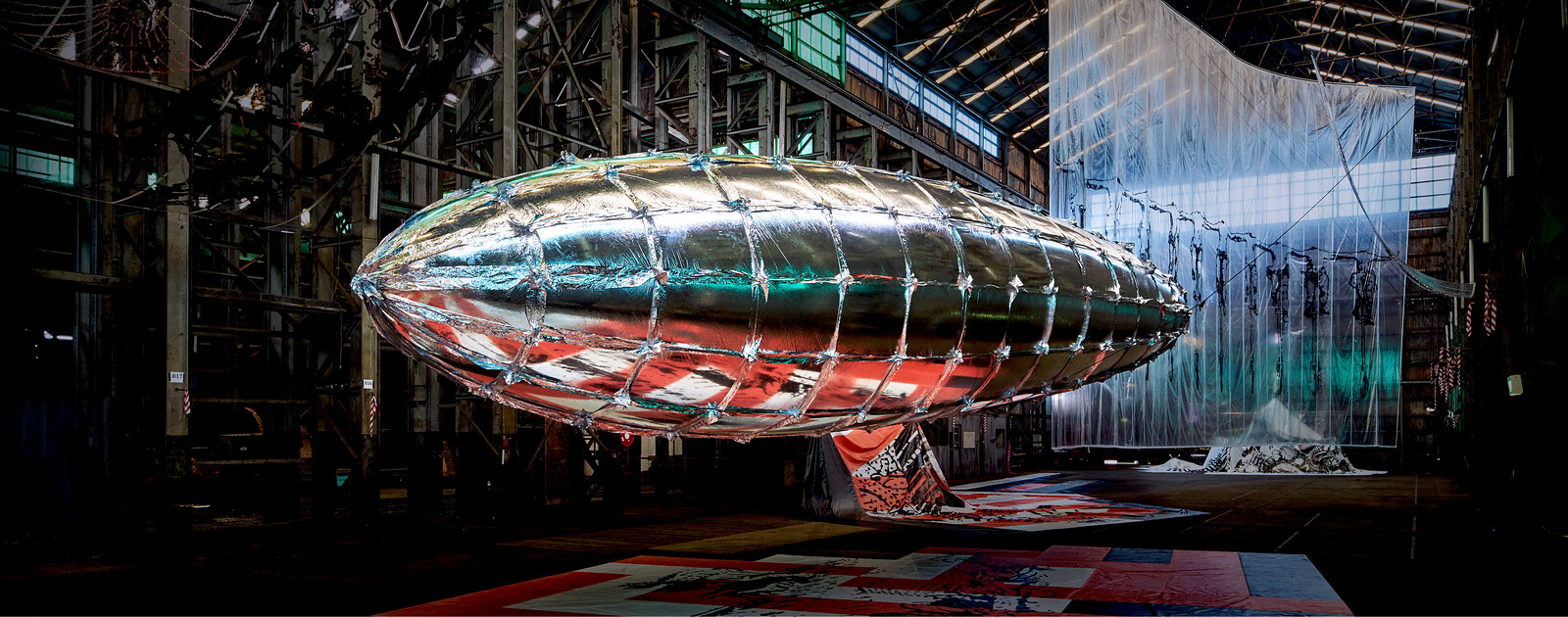Crashing
May 30–August 19, 2018
Belvedere Road
London SE1 8XX
United Kingdom
“I want to get across a sense of walking through time, through different periods. My works are a kind of journey to another place, another time. We travel, but the stories are in the landscape and you can see that it’s always the same place.” –Lee Bul
For the past three decades, Lee Bul (b. 1964, Seoul, South Korea) has explored questions of intimacy, gender, technology and class—as well as the tension between despair and hope, horror and beauty—through works that range from provocative guerrilla performances, to large-scale installations that attempt to get our body and our brain “working at the same time, together.” Taking over the entire Hayward Gallery, Lee Bul: Crashing brings together more than 100 works from the late 1980s to the present day, including a number of new sculptures and a site-specific commission, in order to explore the full range of her pioneering, thought-provoking and highly inventive practice.
Shaped by her experience of growing up in South Korea during a period of political upheaval, much of Lee Bul’s work is concerned with trauma, and the way that idealism or the pursuit of perfection—bodily, political or aesthetic—might lead to failure, or disaster. Questioning women’s place in society, particularly Korean society, she also addresses the ways in which popular culture—in both the East and West—informs and shapes our idea of “feminine” beauty.
Setting out to “mix things together, conceptually and also materially,” Lee Bul draws on diverse sources that include science fiction, 20th century history, philosophy and personal experience, whilst making use of deliberately “clashing” materials that range from the organic to the industrial, from silk and mother of pearl, to fibreglass and silicone. Since the early 2000s, she has focused on architectural utopianism, bringing together references to both real and imagined architecture in sprawling sculptures of futuristic cityscapes. At the core of her most recent work is an investigation into landscape, which for the artist includes the intimate landscape of the body, ideal or fictional landscapes, and the physical world that surrounds us.
Opening with the artist’s iconic “Cyborg, Monster and Anagram” series, Lee Bul: Crashing features documentation of her early performances, seminal works such as Majestic Splendor (1991–2018)—an installation consisting of rotting, sequinned fish—and the pivotal Live Forever III (2001), which acts as a bridge between her early figurative works and the later installations. Also on display, some for the first time, are the artist’s paintings and wall pieces, along with drawings and architectural models that illuminate the way that her three-dimensional works are developed. The exhibition culminates with the monumental Willing To Be Vulnerable – Metalized Balloon (2015–16), suspended above a mirrored floor in Hayward’s light-filled upper galleries. This colossal sculpture—which references the 1937 Hindenburg disaster—is at once aspirational and optimistic, and concerned with technological failure, fragmentation and destruction. It is accompanied by the artist’s new intricate sculptural work Scale of Tongue (2017–18), which makes subtle reference to the Sewol Ferry Disaster of 2014.
For this exhibition, which coincides with Hayward Gallery’s 50th anniversary in July, Lee Bul treats the gallery’s architecture not as a backdrop but a collaborator. An ambitious, site-specific commission Weep into stones (2017–18) responds to both the fabric of the Hayward and its radical design by draping the building in a shimmering curtain of fine steel wire, crystal and glass.
Tour dates
September 29 2018–January 13, 2019
Gropius Bau
Niederkirchnerstraße 7
10963 Berlin
Lee Bul: Crashing is curated by Stephanie Rosenthal, Director, Gropius Bau, Berlin with Eimear Martin, Associate Curator and Bindi Vora, Curatorial Assistant.
The accompanying catalogue surveys 30 years of Lee Bul’s work and features an interview with the artist, essays by Michaël Amy, Yeon Shim Chung, Laura Colombino and Stephanie Rosenthal, as well as supplementary texts that detail Korea’s divided history and the development of post-war women’s movements in South Korea.



